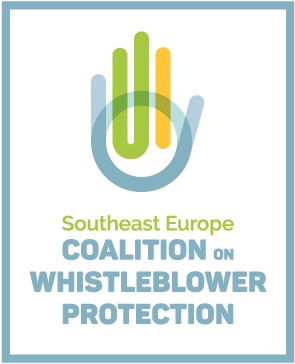It is problematic that the government’s support in economic zones is opaque, different budget items are used, which makes it particularly difficult to determine how much money has been spent for these foreign investors, analysts say
author: Natasha Stojanovska
Article is originaly published on May 6, 2015 at Faktor.mk
Trying to attract more foreign investments, the government not only provides customs and tax exemptions, but also offers direct state aid by subsidizing fees for employees’ salaries. But no institution discloses exactly how many people are employed in factories that are part of the free economic zones and the amount of allowances that foreign owners of factories have received from the state, specifically for employment.
The data is kept secret, and one of the prisms through which we can see the effects of state aid that foreign companies get in the free economic zones is the number of open positions, then the quality of jobs (salary, working hours, job security, etc.) and how these foreign investments have contributed to the creation of indirect jobs at local level despite directly created jobs.
Virtually no institution or organization which monitors the effects of foreign investments in the country has the exact number of employees that are in different ways engaged in the four free economic zones in the country.
We requested data from the Directorate for Technological Industrial Development Zones. But they did not respond to our questions. The Foreign Investors Council is does not knows the number of employees in the free economic zones, or the amount of exemptions obtained for employment.
The answer to the same question received neither the analysts from the Macedonian Center for European Training (MCET), who had been investigating the effects of free economic zones in the country on the overall economy.
“For the analysis we worked on, we asked the Agency for Foreign Investments for public information but they sent us to the Directorate for Technological Industrial Development Zones, then to the Agency for Foreign Investments, where we did not get the answer about the number of employees in the zones. Only from what is presented in the media we can assume that their number is about 10,000 to 12,000 maximum”, says Diana Bliznakova from MCET. According to Bliznakova, factories in the free economic zones in Macedonia function as isolated economic islands with cheap and skilled labor.
“Interviewed people do not know about any trade union and it has been noted that before the conclusion of the first employment contract, the employer requires the employee to sign a statement renouncing his membership or initiative to form a union. There is no notification of a collective contract between the employees and the employer”, it is said in the MCET report on the operation of factories in the free economic zones.
Unlike Macedonia, the information on the number of employees in the free economic zones is not secret in Croatia. That is, on the official internet site of the Ministry of Economy, one can find data on the number of employees, separately in each zone.
| Free zone name | Town | Land area (m2) | Available plots m2 | Number of zone users | Number of employees |
| KRAPINA-ZAGORJE FREE ZONE | Krapina | 70.000 | 30.000 | 14 | 123 |
| OSIJEK FREE ZONE | Osijek | 270.000 | 80.000 | 4 | 630 |
| KUKULJAN FREE ZONE | Kukuljanovo | 28.000 | 1.000.000 | 5 | 73 |
| RIJEKA PORT FREE ZONE | Rijeka | 1.635.000 | 570.870 | 9 | 1.332 |
| ZAGREB FREE ZONE | Zagreb | 79.860 | 0 | 125 | 225 |
| OBROVAC FREE ZONE* | Obrovac | ||||
| SPLIT PORT FREE ZONE | Split | 259.900 | 100.000 | 23 | 45 |
| PULA PORT FREE ZONE | Pula | 73.000 | 0 | 19 | 588 |
| SPLIT-DALMATIA FREE ZONE | Split | ||||
| PLOČE PORT FREE ZONE | Ploče | 2.145.892 | 1.548.700 | 3 | 1.064 |
| BUJE FREE ZONE* | Buje | ||||
| ĐURO ĐAKOVIĆ- SLAVONSKI BROD FREE ZONE | Slavonski Brod | 262.493 | 63.100 | 27 | 1.114 |
| VARAŽDIN FREE ZONE | Varaždin | 600.000 | 0 | 1 | 200 |
| VUKOVAR PODUNAVLJE FREE ZONE | Vukovar | 21.080 | 13.432 | 20 | 123 |
| RIBNIK FREE ZONE | Ribnik | 32.000 | 10.000 | 7 | 17 |
Unfortunately, the detailed review that Croatia has can neither be seen with our northern neighbor, Serbia, nor in Macedonia. The website of the Free Zones Administration of Serbia lists the zones and the companies operating in each of the zones and what they deal with. Our website of the Directorate for Technological Industrial Development Zones lists only the zones and six investors in total, among which are: Johnson Controls; Van Hool; Johnson Matthey; TeknoHose; Kemet and Protek Group. For two of the four economic zones: TIDZ Skopje 2 and TIDZ Tetovo there is no contact information about the zone, and in all four contact person is the director of the zones, Viktor Mizo. There is no precise number of employments, except announcements about how many will be employed.
The number of employees in the zones may only be obtained from the official statement of Prime Minister Nikola Gruevski, who recently said that more than 10 thousand people work there and that their employment has decreased the unemployment rate.
“In the period since 2006 the unemployment rate of about 38% has been reduced to 27.6%. In the same period over 130,000 jobs in Macedonia have been opened, in foreign and domestic capacities, in the private and public sector, through active employment measures. At the same time, it is a very difficult time of global and European economic crisis. So it is expected the already announced, but not yet open foreign investment to open over 13,000 direct jobs, and the operational plan for active employment measures for 2015 provides support for opening 8,500 jobs”, said Prime Minister Nikola Gruevski recently .
From the Foreign Investors Council they do not know whether and how many unions there are in every company that is part of the free economic zones, but they say that according to the laws it is a workers’ right to be unionized.
“Foreign investors in recent years have constantly been glorified by the holders of economic policies and they are presented as the “holy grail” for the economy, although in the scientific literature there are mixed views about their positive effects in transitional countries. Moreover, to attract foreign investors, different types of benefits are used, from tax exemptions, to direct financial support for large foreign companies, thereby placing foreign investors in a more favorable position than domestic investors.
Part of the world’s economists see this process as replacement of the troubled privatization with a new way of selling productive capacity in the economy to foreigners who receive a significant, and in some sectors even dominant market share, says University Professor Dragan Tevdovski.
The government boasts that export from the zones is growing; economists claim that it does not affect the budget
The government boasts that export from the zones is steadily increasing, and this trend is expected to continue and to exceed the last year record, when exports from the zones amounted to 1 billion and 170 million Euros, 52% more than in 2013. And, according to government estimates, in the medium term, export should be expected of about 2 billion Euros, and it is pointed out that the TIDZ export already participates with 31% in total exports of Macedonia.
“Compared to last year we have an increase in exports of around 28%. It is even slightly above those predictions that we had last year for this year. All companies that are already functional, work actively. The number of orders they have from their partners in Europe has increased and of course, starting with cooperation of other companies in the zones we hope that the number will grow from year to year. Perhaps you cannot expect every year to have 20 or 30% growth in exports, but even the growth of 10% is a great contribution not only in the total trade exchange of Macedonia, but also in the coverage of imports by exports, because if you do an analysis of the figures for the past three to four years, the coverage has increased, but also the cooperation with domestic companies”, said for the media Viktor Mizo, Director of DTIDZ.
But export growth of free economic zones has no direct implications on the budget because the companies have full customs and tax exemptions. So it is only a statistical figure, part of the analysts say.
“Given that green customs channel is valid for the majority of companies or for all, it means that Macedonian budget does not increase proportionally with exports from foreign companies. It only means that more companies are working”, says Diana Bliznakova from MCET.
In Macedonia, the companies in the free economic zones operate at a rate of 0% customs duties and VAT and 0% income tax and personal income tax for 10 years. As it can be seen from the official data available, in Serbia there are almost similar benefits for the companies in the local zones, but for fewer years, while in other countries in the region smaller packages of incentives are offered to foreign companies, i.e. in some of the countries benefits offered even depend on which part of the country the zone is located.
Advantages and incentives in free economic zones in Macedonia
| CUSTOMS DUTY | ||
| GOODS | RATE OUTSIDE THE ZONES | RATE IN THE ZONES |
| Raw materials | 0% – 15% | 0% |
| Equipment | 5% – 20% | 0% |
| TAXES | ||
| GOODS | RATE OUTSIDE THE ZONES | RATE IN THE ZONES |
| VAT | 18% | 0% |
| Income tax | 10% | 0% in 10 years |
| Personal income tax | 10% | 0% in 10 years |
Precisely because of all these exemptions, some economists believe that foreign direct investments and their effects are to be analyzed by answering a few questions such as: how come, not only exports, but also imports grow intended just for factories in the free economic zones, then why the balance of payments of NBRM shows an outflow of income, including earnings and dividends of the foreign companies and how much the country has invested so far to attract foreign investors.
Again for part of these questions we addressed the Directorate for Technological Industrial Development Zones, but the answers were not provided.
We went to the State Statistical Office to get information, how much import and export is made of free economic zones, but there they said they did not have such statistics and told us to look for the data in the Directorate for Technological Industrial Development Zones.
According to University Professor Marjan Petreski, in attracting foreign factories in the free economic zones special emphasis is put on companies with higher technology, which in the short term obstructs their significant connection to local economy or part of their inputs to be supplied at the local market by domestic companies.
“Hence, it is true that these companies have significantly boosted exports, but also much of that export is with import component. Therefore it would be most proper if in the assessment of the effect of these companies net exports are seen, that is the difference between exports and imports. For now, the added value (the difference) is mainly reduced to the added labor. As for the benefits provided to foreign factories, some of them are not known to the public, but I believe that for some of them justification can be found, because without such triggers, foreign companies would not come to invest here. We can only evaluate long term if what we spend on foreign factories in the broadest sense of the word is greater than what we get as a benefit, says University Professor Marjan Petreski.
Analysts, however, point out that the direct support the Government gives to foreign companies should not be neglected, and especially problematic is that it is realized opaque, different budget items are used, which makes it particularly difficult to determine how much money has been spent on these foreign investors operating in the free economic zones. It is so because in the reports submitted by the Commission for Protection of Competition and the Directorate for Technological Industrial Development Zones, there are only notices that a particular company has received an advantage, but the amount is not disclosed. It remains a secret, written with three x (i.e. xxx).
(The story was is supported within the NED project “Raising Awareness about Corruption through Investigative Reporting”)





